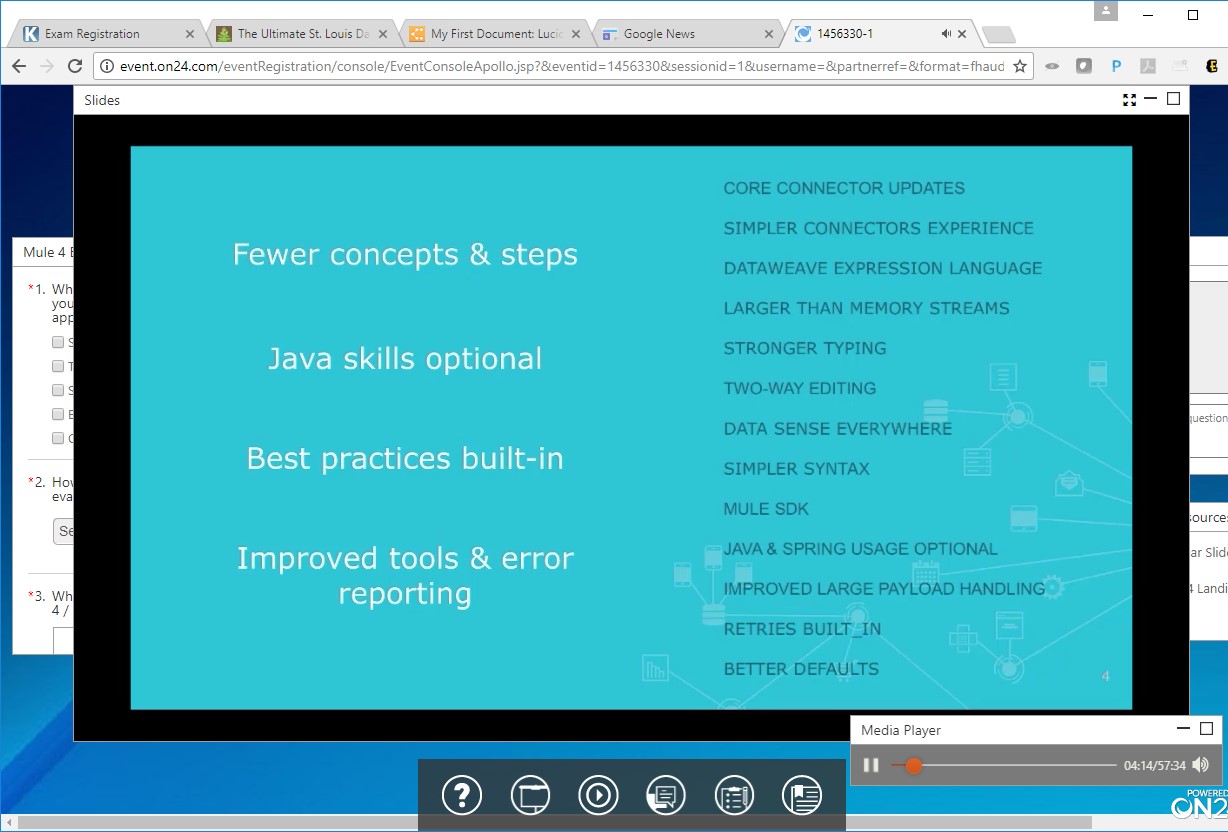MuleSoft just announced the beta release of Mule 4 and Studio 7. If you have worked with any Mule products for the past few years, you will come to appreciate many of the new features in this beta release. To communicate all of the new features, MuleSoft is sharing a series of webinars on the new features. The first webinar covered general features, the Runtime and Studio. I’m already impressed with they have shown. I can’t wait to see what is announced for the new features on API Manager and CloudHub functions!
Here is my take on some of the new features:
- GUI / Palette – I am OK with the new GUI icons. They come with blue backgrounds now. No biggy for me over here. Some new palette features are good, such as a “Favorite” tab containing the commonly used icons, and right clicking on icons in the flow will allow you to view the corresponding XML source. I am sure I will come to appreciate these handy functions more as I put my hands on the new Studio.
- Major exception handling update – If you worked with Mule in the past, you know Mule exception handling is almost the same as the underlying Java. However, the older exception handling has left a few things to be desired. I guess they listened to the developer community and responded as such. For example, in the past, you will have to use Groovy to throw an exception. It has always been a sore point for me. Also, the exception handling in the past can only be applied to flows and a few other scopes. The new Mule 4 has stepped up “bigly;” you can add try-catch inside a block of your flow. You can propagate an exception up to the chain. These behaviors more closely reflect the underlying Java exception handling most developers have become accustomed to.
- Major update on data streaming handling – It’s all behind the scenes now. I absolutely love this. In the past when data streams are involved, there are multiple steps of data conversions, hence those endless “transformers”: JSON to string, string to XML, object to string… Sometimes it is mind-boggling. I often just tell my clients to do trial and errors and see which conversion fits in which situation. Now those transformations are automatically taken care of behind the scenes. I am eager to get my hands on it to see how it works.
- Online design center – I think it used to be called Mozart a couple of years ago. Now it is being officially released. It is a cool online flow editor, but it’s not something for hardcore techies. It is some sub-functions of the Studio online.
- Connectors can set the output to variable directly – it saves the extra steps with message enricher.
- MEL – Another fundamental change is the MEL. Now MEL uses Dataweave syntax. Any straddlers who are not totally committed to dataweave, it’s wake up time. Dataweave is central to the Mule from here on.
There are other miscellaneous features. Some are even “invisible;” that’s because Mule is trying to make everything simple. Some of the things have become transparent you don’t even “see” them anymore. For example, Mule 4 has the self-tuning that takes care of the tweaking the worker-thread configurations you had to do manually in the past.
Two more webinars are coming up. I’m especially looking forward to seeing the new API Manager features and CloudHub functions.


